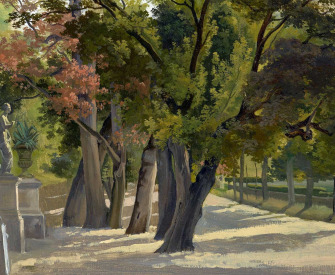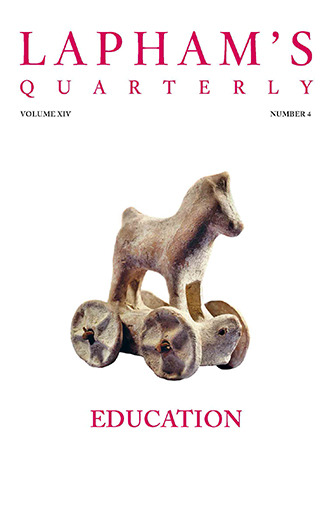Africa has her mysteries, and even a wise man cannot understand them. But a wise man respects them.
—Miriam Makeba, 1988Mistaken Identities
Langston Hughes solves a mystery.
One of the great difficulties about being a member of a minority race is that so many kindhearted, well-meaning bores gather around to help. Usually, to tell the truth, they have nothing to help with, except their company—which is often appallingly dull.
Some members of the Negro race seem very well able to put up with it, though, in these uplifting years. Such was Caleb Johnson, colored social worker, who was always dragging around with him some nondescript white person or two, inviting them to dinner, showing them Harlem, ending up at the Savoy—much to the displeasure of whatever friends of his might be out that evening for fun, not sociology.
Friends are friends and, unfortunately, overearnest uplifters are uplifters—no matter what color they may be. If it were the white race that was ground down instead of Negroes, Caleb Johnson would be one of the first to offer Nordics the sympathy of his utterly inane society, under the impression that somehow he would be doing them a great deal of good.
You see, Caleb and his white friends, too, were all bores. Or so we, who lived in Harlem’s literary bohemia during the “Negro Renaissance,” thought. We literary ones considered ourselves too broad-minded to be bothered with questions of color. We liked people of any race who smoked incessantly, drank liberally, wore complexion and morality as loose garments, and made fun of anyone who didn’t do likewise. We snubbed and high-hatted any Negro or white luckless enough not to understand Gertrude Stein, Ulysses, Man Ray, the theremin, Jean Toomer, or George Antheil. By the end of the 1920s Caleb was just catching up to Dos Passos. He thought H. G. Wells good.

Qajar, by Shadi Ghadiran, 1998. Chromogenic print. © Shadi Ghadiran, courtesy the artist and Robert Klein Gallery, Boston.
We met Caleb one night in Small’s. He had three assorted white folks in tow. We would have passed him by with but a nod had he not hailed us enthusiastically, risen, and introduced us with great acclaim to his friends, who turned out to be schoolteachers from Iowa, a woman and two men. They appeared amazed and delighted to meet all at once two Negro writers and a black painter in the flesh. They invited us to have a drink with them. Money being scarce with us, we deigned to sit down at their table.
The white lady said, “I’ve never met a Negro writer before.”
The two men added, “Neither have we.”
“Why, we know any number of white writers,” we three dark bohemians declared with bored nonchalance.
“But Negro writers are much more rare,” said the lady.
“There are plenty in Harlem,” we said.
“But not in Iowa,” said one of the men, shaking his mop of red hair.
“There are no good white writers in Iowa either, are there?” we asked superciliously.
“Oh, yes, Ruth Suckow came from there.”
Whereupon we proceeded to light in upon Ruth Suckow as old hat and to annihilate her in favor of Kay Boyle. The way we flung names around seemed to impress both Caleb and his white guests. This, of course, delighted us, though we were too young and too proud to admit it.
The drinks came and everything was going well, all of us drinking, and we three showing off in a highbrow manner, when suddenly at the table just behind us a man got up and knocked down a woman. He was a brownskin man. The woman was blond. As she rose he knocked her down again. Then the red-haired man from Iowa got up and knocked the colored man down.
He said, “Keep your hands off that white woman.”
The man got up and said, “She’s not a white woman. She’s my wife.”
One of the waiters added, “She’s not white, sir, she’s colored.”
Whereupon the man from Iowa looked puzzled, dropped his fists, and said, “I’m sorry.”
The colored man said, “What are you doing up here in Harlem anyway, interfering with my family affairs?”
The white man said, “I thought she was a white woman.”
The woman who had been on the floor rose and said, “Well, I’m not a white woman, I’m colored, and you leave my husband alone.”
Then they both lit in on the gentleman from Iowa. It took all of us and several waiters, too, to separate them. When it was over, the manager requested us to kindly pay our bill and get out. He said we were disturbing the peace. So we all left. We went to a fish restaurant down the street. Caleb was terribly apologetic to his white friends. We artists were both mad and amused.
“Why did you say you were sorry,” said the colored painter to the visitor from Iowa, “after you’d hit that man—and then found out it wasn’t a white woman you were defending, but merely a light colored woman who looked white?”
“Well,” answered the red-haired Iowan, “I didn’t mean to be butting in if they were all the same race.”
“Don’t you think a woman needs defending from a brute, no matter what race she may be?” asked the painter.
“Yes, but I think it’s up to you to defend your own women.”
“Oh, so you’d divide up a brawl according to races, no matter who was right?”
“Well, I wouldn’t say that.”
“You mean you wouldn’t defend a colored woman whose husband was knocking her down?” asked the poet.
Before the visitor had time to answer, the painter said, “No! You just got mad because you thought a black man was hitting a white woman.”
“But she looked like a white woman,” countered the man.
“Maybe she was just passing for colored,” I said.
“Like some Negroes pass for white,” Caleb interposed.
“Anyhow, I don’t like it,” said the colored painter, “the way you stopped defending her when you found out she wasn’t white.”
“No, we don’t like it,” we all agreed except Caleb.
Caleb said in extenuation, “But Mr. Stubblefield is new to Harlem.”
The red-haired white man said, “Yes, it’s my first time here.”

Soldiers training at the Urban Warfare Training Center, Tza'elim, from the series Infected Landscapes, by Shai Kremer, 2007. Chromogenic print, 30 x 40 inches, edition of 5. © Shai Kremer, courtesy Julie Saul Gallery, New York.
“Maybe Mr. Stubblefield ought to stay out of Harlem,” we observed.
“I agree,” Mr. Stubblefield said. “Good night.”
He got up then and there and left the cafe. He stalked as he walked. His red head disappeared into the night.
“Oh, that’s too bad,” said the white couple who remained. “Stubby’s temper just got the best of him. But explain to us, are many colored folks really as fair as that woman?”
“Sure, lots of them have more white blood than colored, and pass for white.”
“Do they?” said the lady and gentleman from Iowa.
“You never read Nella Larsen?” we asked.
“She writes novels,” Caleb explained. “She’s part white herself.”
“Read her,” we advised. “Also read The Autobiography of an Ex-Colored Man.” Not that we had read it ourselves—because we paid but little attention to the older colored writers—but we knew it was about passing for white.
We all ordered fish and settled down comfortably to shocking our white friends with tales about how many Negroes there were passing for white all over America. We were determined to épater les bourgeois real good via this white couple we had cornered, when the woman leaned over the table in the midst of our dissertations and said, “Listen, gentlemen, you needn’t spread the word, but me and my husband aren’t white either. We’ve just been passing for white for the last fifteen years.”
“What?”
“We’re colored, too, just like you,” said the husband. “But it’s better passing for white because we make more money.”
Well, that took the wind out of us. It took the wind out of Caleb, too. He thought all the time he was showing some fine white folks Harlem—and they were as colored as he was!
Caleb almost never cursed. But this time he said, “I’ll be damned!”
Then everybody laughed. And laughed! We almost had hysterics. All at once we dropped our professionally self-conscious “Negro” manners, became natural, ate fish, and talked and kidded freely like colored folks do when there are no white folks around. We really had fun then, joking about that red-haired guy who mistook a fair-colored woman for white. After the fish we went to two or three more night spots and drank until five o’clock in the morning.
Finally we put the light-colored people in a taxi heading downtown. They turned to shout a last goodbye. The cab was just about to move off, when the woman called to the driver to stop.
She leaned out the window and said with a grin, “Listen, boys! I hate to confuse you again. But, to tell the truth, my husband and I aren’t really colored at all. We’re white. We just thought we’d kid you by passing for colored a little while—just as you said Negroes sometimes pass for white.”
She laughed as they sped off toward Central Park, waving, “Goodbye!”
We didn’t say a thing. We just stood there on the corner in Harlem dumbfounded—not knowing now which way we’d been fooled. Were they really white—passing for colored? Or colored—passing for white?
Whatever race they were, they had had too much fun at our expense—even if they did pay for the drinks.

Langston Hughes
“Who’s Passing for Who?” At the age of twenty-one in 1923, Hughes embarked on the West Hesseltine as a messman, making landfall in West Africa, where some Kru tribesmen refused to believe that he was black, owing to his comparatively light skin. He went on to became a leading figure in the Harlem Renaissance, publishing “The Negro Artist and the Racial Mountain” and The Weary Blues and Other Poems in 1926, serving as a correspondent for the Baltimore Afro-American in Spain in 1937, and writing the screenplay for Way Down South in 1939.


